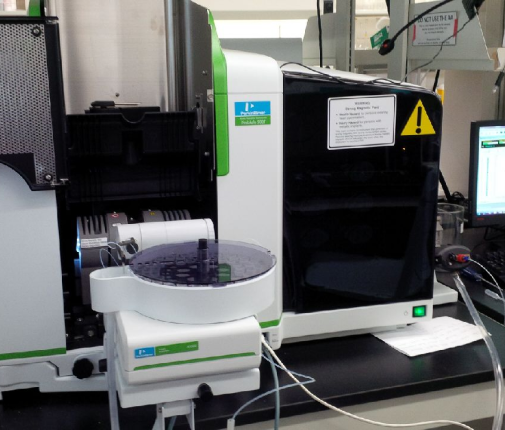Atomic Absorption Spectroscopy (AAS)
Precise Elemental Measurement You Can Trust
Atomic Absorption Spectroscopy is a technique used to measure metals and metalloids in samples by observing how atoms absorb light at characteristic wavelengths. Because each element absorbs only specific wavelengths, AAS offers excellent specificity and very low detection limits.
Industries such as pharmaceuticals, environmental testing, consumer products, chemicals, food & beverage, and cosmetics use AAS when they need to verify elemental content, detect trace metals, or ensure safety and compliance.

How Atomic Absorption Spectroscopy Works
Quantum Analytics Group specializes in atomic absorption spectroscopy (AAS). Our lab performs elemental analysis by flame AAS with air-acetylene and nitrous oxide-acetylene systems, graphite furnace AAS for higher sensitivity, and mercury determination by hydride vapor generation.
Our graphite furnace system features a Transversely Heated Graphite Atomizer (THGA) with Zeeman background correction, providing detection limits comparable to ICP-MS.
These capabilities support compendial requirements where AAS is preferred, such as the Nickel / Limit of Nickel test, Zinc determination in USP <591> for Insulin, and quantification of elements including Aluminum, Calcium, Sodium, Potassium, and Chromium.
Our 3-Step Process to Safer, Compliant Products
From initial consultation to clear, actionable results, we make it simple to get the data you need to move forward.
Receive Technical Consultation
We assess compliance requirements, testing scope, and timelines
Get Fast, Accurate Answers
Expert testing and analysis delivered with actionable data
Ready to Get Results You Can Trust?
Book a consult with our team to discuss your goals, get expert input, and map out your next steps — with no pressure, just clarity.
.png?width=100&height=104&name=Frame%204%20(1).png)